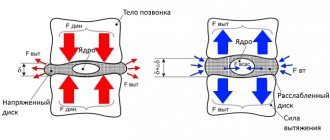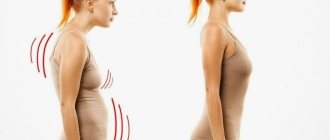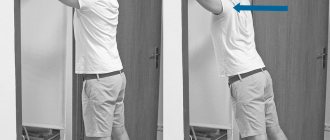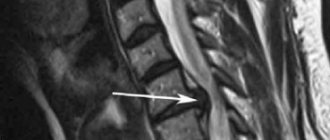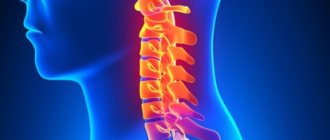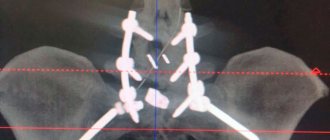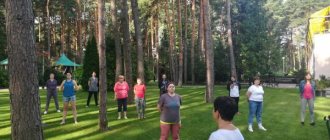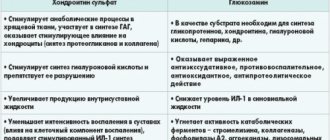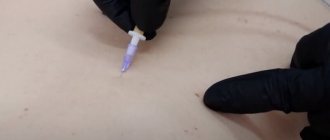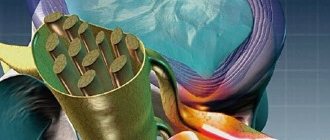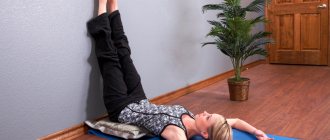What to take with you Effect of the spinal disease treatment program
Spinal diseases are a large group of diseases that affect more than 85% of the population. If 50 years ago back problems occurred in older people, a sedentary lifestyle and computerization of society have led to the fact that such diseases have become “younger”.
Underwater horizontal spinal traction in Rostov-on-Don
is performed under the supervision of a neurologist with control of the MRI study conclusion.
Underwater horizontal spinal traction has been used in medicine for more than 15 years.
, which is considered the most physiological, is easier to dose according to the degree of load, is aimed at the affected segment and, accordingly, is safer for patients than, for example, vertical traction.
This method has a pronounced analgesic effect, reduces muscle tension in the spine, improves posture, increases range of motion, and reduces the feeling of numbness in the limbs.
Causes of spinal diseases
Diseases can be either congenital or acquired. The most common causes of spinal column diseases are:
- injuries;
- overload;
- metabolic disease;
- staying in the wrong position for a long time;
- excessive stress;
- infectious diseases affecting the condition of the spine and joints.
- age-related changes;
- sedentary lifestyle;
- abuse of physical activity;
- overweight;
- bad habits;
- improper or unbalanced diet;
- chronic pathologies.
How does the procedure work?
Spinal traction in water follows the following scheme:
- the patient is immersed in water and takes a certain position: lying or standing;
- water temperature 32–35 °C, the patient does not move for 7 minutes, allowing the muscle frame to relax;
- After this, the patient is put on a corset and scuba diving with exercises is performed.
The first spinal traction procedures are carried out without the use of additional load, subsequent ones with a load that increases in proportion to the time spent under water by 1-2 kg and 1-2 minutes more.
Indications for underwater horizontal spinal traction
- intervertebral disc herniation, lumbodynia with neurological manifestations, protrusion and hernia
- lumboischialgia with static-dynamic disorders in the form of limited range of motion in the spine
- scoliosis, kyphoscoliosis
- flattening of lumbar lordosis
- radicular compression
- initial manifestations of ankylosing spondylitis
- spondylosis deformans, arthrosis deformans, spondyloarthrosis
Rules
When stretching, the following recommendations should be followed:
- The first 3–5 sessions are trial sessions, during which no additional weights are used or minimal weights are used. If during the trial procedures the patient felt unwell (pain intensified, dizziness began, hearing impairment appeared), then treatment is stopped.
- Water traction is a serious procedure that requires preparation. Before the course, the patient must take medications and attend physiotherapeutic procedures that will help reduce inflammation and pain.
- The traction force must be increased gradually. The first sessions are carried out with your own body weight, then minimal weights are used, taking into account the weight, height of the patient, and the severity of the pathology.
- During the course, it is forbidden to move suddenly, subject the spine to heavy loads, or become hypothermic.
- Immediately after the procedure, the patient is put on a rigid corset, which fixes the spinal column in an elongated position. The patient is transported on a gurney to the ward, where he must lie for another 1–3 hours. It is prohibited to rise or move suddenly after traction.
- For 6–8 weeks after completion of the therapeutic course, the patient should sleep on an orthopedic mattress and wear a fixing bandage.
The first sessions of underwater traction are considered trial, so they are carried out without weights
Reference. For a herniated disc, a vertical method of spinal traction is recommended. The load increases gradually. For arthrosis of the intervertebral joints, it is better to practice horizontal traction with your own weight. For radiculitis, course traction of 10 sessions is indicated.
[node:field_similarlink]
Who is at risk?
One of the main causes of spinal diseases is genetic predisposition. Experts have found that in 70% of cases such diseases are transmitted along chromosomes.
People suffering from akinesia – lack of movement – are also at risk. They lead a sedentary lifestyle. Every year there are more and more such people.
People exposed to injuries and external mechanical influences are also at risk of acquiring spinal disease. This group includes athletes, people involved in extreme sports, and powerlifting.
Reviews
Despite the fact that doctors have conflicting opinions regarding spinal traction, most patients are satisfied with the results of the procedure. According to people, this technique helps to cope with hernias, scoliosis, and spondylosis.
Andrey, 38 years old: “I have a sedentary job, because of which I began to feel pain in my back, at first they appeared periodically, and then they became constant. After visiting a doctor, it turned out that the pain was caused by progressive radiculitis. I was prescribed medications, electrophoresis, and a course of underwater spinal traction. After completing the course, my condition improved; now pain may appear, but it is very rare and moderate.”
Maxim, 44 years old: “I was diagnosed with a hernia of the lumbar spine. I was prescribed a comprehensive treatment using medications, massage, and various physical procedures, but the pain disappeared only for a while. Then the doctor decided to slightly change the treatment tactics and added water traction of the spine to the regimen. Literally after 2-3 sessions, the painful sensations began to weaken, and towards the end of the course they disappeared completely. The sessions themselves did not cause pain, and after them there was a feeling of lightness. Now, when the disease worsens, I perform underwater traction first.”
Natalia, 33 years old: “I have been suffering from osteochondrosis for a long time; there is a small protrusion in the lumbar region. I have already completed 2 courses of water traction of the spine. In my opinion, this particular procedure helped me get rid of back pain and improve lower back mobility. During the first sessions it was a little scary, but now I understand that nothing bad will happen, so I relax and let the specialist do his job. After the sessions I feel relaxed, light, the pain goes away, and my mood improves. I didn’t feel any side effects after underwater traction.”
Program “Treatment of Spine Diseases”
Indications: back pain, radicular syndromes (sciatica), disc protrusion, spondyloarthrosis, ankylosing spondylitis (initial stage).
An MRI examination is required when completing the program.
Duration of treatment from 6 days Cost of treatment – 1,900 rubles/1 day
Medical services included in the cost of the program
- Initial examination and daily observation by a neurologist
- ECG
- Underwater horizontal spinal traction – up to 10 procedures, as prescribed by the attending physician, with individual selection of the load
- Physiotherapeutic procedures - up to 10 procedures, as prescribed by the attending physician
- Therapeutic massage of problem areas - up to 10 procedures, as prescribed by the attending physician
Take it with you
- Passport or other identification documents; medical documents or copies thereof; expert opinion (if any)
- Swimsuit/swimming trunks, shoes for water procedures, towel, comfortable clothes for sports and walking
You can
find out detailed information about the “Treatment of Spine Diseases” program and sign up for a consultation phone, +7 (863) 322-03-73 (Mon-Sat from 9:00 to 17:00)
* Without accommodation and meals
Accommodation is provided by Park Hotel "Nadezhda" ***.
Accommodation cost from 600 rub./1 day. Meals (full board) 850 RUR/1 day
Refunds are issued based on the price list
Preparation for the procedure
The doctor selects the method of spinal traction and the duration of the course based on examination and questioning of the patient. For example, with underwater extraction, 10-12 sessions are often prescribed, which are carried out every other day. And in the case of hardware traction, the course is usually designed for 5-8 procedures, which are often combined with manual therapy.
To establish indications for spinal traction, X-rays, MRIs and other procedures may be prescribed. Only after a complete examination is the patient recommended to use manual, underwater or hardware (dry) traction.
The effect of the treatment program for spinal diseases
The technique has a positive effect on the spinal column. Even after several sessions, the spasm weakens and the pain subsides. The methods used make it possible to increase the intervertebral distance, due to which protrusions and hernias are retracted. At the same time, pressure is released from the spinal nerves and blood vessels. In the affected areas of the spine, blood flow and metabolic processes are normalized.
In addition, the method of treating spinal diseases leads to the following results:
- reduction of back pain;
- increased mobility in the spine;
- reducing the feeling of numbness in the limbs;
- improved posture;
- relaxation of back muscles;
- improvement of blood supply;
- improvement of nerve fiber conduction;
- improvement of well-being and mood.
The essence of the technique
Underwater spinal traction is a therapeutic procedure during which plain or mineral water and a weight are applied to a person’s back. It helps improve blood flow, nourish the cartilage pads between the vertebrae, relax the muscles, and also increase the space between the vertebrae. These effects are necessary in the treatment of protrusion, disc herniation, etc.
Quite a lot of spinal traction in an aquatic environment is used to prevent or treat disc herniation. The pathology occurs due to the fact that the tension of the connective tissue fibers of the disc capsule increases, this is due to its excessive compression by the vertebrae. When a hernia occurs, the bone bodies of the spine become excessively mobile, the muscles contract to fix them, then the pressure on the intervertebral disc increases, its shell cannot withstand the load, ruptures, and the nucleus pulposus (the gel-like contents of the disc) falls out.
To relax the muscles and eliminate their physiological blockage, underwater traction is used. This effect cannot be achieved with the help of medications. During underwater traction, the vertebral ligaments are stretched; under the influence of warm water, the spasmed muscles relax, which then reduces the pressure of the compressed cartilage pad between the vertebral bodies. This is a safe and natural method of traction, during which the patient does not need to make any special efforts.
Reference. After underwater traction, the distance between the vertebrae increases, the nerve endings and blood vessels are released from compression. The procedure helps to get rid of swelling, relieve pain and neurological disorders.
Treatment of osteochondrosis, spinal hernia, spinal traction in the “Smart Clinic”
Perhaps every person has at least once experienced pain in the back : lower back, thoracic or cervical region. And few people think that such “bells” from the spine can indicate the beginning of global problems. If you brush them off and do not carry out the necessary prevention in time, the consequences can be very, very serious - often the only option to restore the ability to move is surgery!
For those who are thinking about maintaining their health , our rehabilitation center offers special programs for the prevention and treatment of modern human “companions” - osteochondrosis, spinal hernia, radiculitis, scoliosis, etc.
A comprehensive program may include various treatment procedures prescribed after a medical examination, including:
- underwater spinal traction;
- kinesitherapy - a device for treatment with “movement”.
Underwater horizontal traction of the spine allows you to gradually put the spinal discs “in place”, increase the distance between them, and also reduces muscle tension and makes the spine more mobile, restoring flexibility and the joy of movement.
This therapy is based on modern techniques that allow each patient to individually calculate and maintain the load on the spine. In this case, the features of the current state of a person and his muscular corset are taken into account. Underwater traction of the spine occurs with light loads, acts carefully and gradually, which eliminates injury to the spine.
Kinesiotherapy is carried out using the Ormed-KINEZO installation. During the procedures, not only the human muscle tissue is affected, but the mobility of the spinal segments and joints also improves, and the elasticity of the tendons increases. Strengthening the muscles will help keep the spine in the desired condition even after the procedures.
Additional effects of a course of kinesitherapy: activation of blood circulation in the lungs, strengthening of the skeletal system, improvement of the functions of the cardiovascular system, increasing the reserve capabilities of your body.
Contraindications
Underwater traction cannot be performed in case of pathologies of any nature, acute inflammatory processes, febrile conditions, rupture of hernias, impaired circulation of the spinal cord, or brittle bones. Underwater traction is prescribed with caution in case of obesity and body weight over 100 kg and in old age over 65 years.
This procedure can be obtained in a sanatorium setting under the supervision of experienced, qualified personnel after consultation with a doctor. Consultation is necessary to eliminate all possible risks from the procedure to the body.
Author of the article:
Volkova Irina Viktorovna, general practitioner of the first qualification category.
Why should you seek medical treatment for spinal diseases?
- Convenient location. We are located near the city center. There is convenient access to the medical center and free parking.
- Professionalism. Treatment is performed by experienced specialists, for whom the client’s health is the main characteristic of their work. They constantly improve their educational level and qualifications.
- Comfort. We won't make you wait long for your appointment. At the medical and long queues. By contacting us, you can count on prompt treatment of diseases.
- Profitable price. The smart clinic pleases its regular customers not only with an acceptable cost of treatment, but also with pleasant promotions and discounts.
Contraindications.
Osteoporosis, large sequestered intervertebral hernias, abdominal operations within the next 3 years (for the lumbar region) and operations on the vessels of the neck (for the cervical region), exacerbations of any chronic diseases, uncontrolled arterial hypertension and arrhythmia, age up to 18 years.
Call the numbers provided and sign up for a spinal disease treatment program. We can definitely help you! +7 (900) 128-79-95, (Mon-Sat from 9:00 to 17:00)
Self-traction at home
Traction of the spine at home has a beneficial effect on various types of injuries (especially with displacement), scoliosis, and osteochondrosis. But in some cases, home hoods are quite dangerous .
You cannot exert this kind of effect on your own with arthritis and arthrosis, high blood pressure and thrombosis. A set of exercises will be beneficial for dislocations and fractures (stage of remission), as well as hernia.
Due to the fact that there is no special equipment at home, it is impossible to carry out underwater traction on your own. However, there are many other, safer ways to relieve tension and increase the distance between spinal segments .
- Starting position: standing on two legs, the distance between them is equal to shoulder width. It is necessary to smoothly lower your head, while bending in the thoracic region. It is very important to keep the lower back in a static state. The patient reaches up (on his toes), while simultaneously weakening the muscles that were used when lowering the head. Hold for 10 seconds. Repeat 5 times. Interval – 20 seconds.
- Starting position - see 1. The person bends forward, arms in front of him, palms down. The lower part of the hand should touch the floor, feel a slight tension in the lumbar region. Repeat 7 times. Interval – 7 seconds.
- Exercise for physically fit people. You need to stand on 2 legs, stretch on your toes, and then smoothly try to touch your forehead to your knees (from a standing position).
- Starting position - lying on your back, limbs lie flat along the body. It is first necessary to restore breathing after previous exercises. Inhale, exhale - bend your legs, pull your knees to your chest, inhale, repeat.
- Starting position - see 4. Grasp one leg with your hands and pull it to your chest, stretch the other as far as possible. Change leg. Repeat 20 times.
- Get on all fours. Arch your back, lower your head to your chest. The stomach should be pulled in as much as possible. Smoothly lower your back and raise your head. Repeat 10 times.
- Starting position - lying on your back, arms along the body, legs bent at the knees. As you exhale, turn your legs to the right side so that they touch the floor, while turning your upper body and head in the opposite direction. Repeat 10 times, alternating.
- This exercise is very useful and safe. It can be used even during periods of exacerbation. You need to place a flat pillow (up to 10 cm thick) under your head, lie on the floor, and stretch your legs. Ask someone from your family to place a small roll of towel (approximately 30 cm high) under your knees. Alternately raise your legs and pull your toes.
- To strengthen the muscles of the lumbar region and maximize the distance between the discs of the sacral region, you should perform this exercise daily: sit on the floor and straighten your legs, try to lean forward so as to clasp your feet with your hands. You cannot bend your knees. If you can't reach your feet, you can try to grab your ankles. Next, lower your head onto your knees as carefully as possible. Stay in this position for several minutes. It should be remembered that if there is the slightest discomfort, you cannot perform the exercise; the muscles should relax and not feel pain and heaviness.
- Lie on your stomach and bend your lower limbs at the knees. Lower one leg, clasp the other with your palm and pull it towards the buttocks. Duration of execution - 5 minutes.
- Get on all fours, bend as much as possible in the lumbar region. You cannot do the exercise with effort; the muscles should not be like stretched strings. Allow your lumbar spine to arch under its own weight.
Thanks to this set of exercises, you will not only relieve tension from the spinal column, but also improve metabolic processes and normalize blood circulation. Such a stretch will quickly reduce the pressure created in the cavities of the spinal segments.
An excellent completion of the above list of physical therapy exercises would be hanging on a horizontal bar or wall bars .
The simplest method of stretching the spine at home is hanging on a horizontal bar
Conclusion
Spinal column traction is a very useful procedure, which is indicated during remission. Execution implies the presence of a specialist nearby who will guide the patient and manage the entire process. If performed incorrectly, there is a risk of disc displacement, cartilage injury, etc. If you perform traction with absolute contraindications, you may even remain disabled. Any treatment should be based on a clearly established diagnosis and preliminary examination. Without indications and permission from a doctor, this procedure is strictly prohibited.
Anatomical and physiological features of the spinal column, pathogenesis of the disease
The spine is a movable “structure” that consists of individual vertebrae and elastic pads - discs. In a healthy spine, the vertebrae are located at a distance from each other. Unfavorable factors and age lead to pathological changes in the discs. They are flattened and deformed, causing the vertebrae to move closer together, squeezing the nerve endings. As a result, a person experiences pain and spasm of the muscles surrounding the spine.
The pathological process leads to a deterioration in well-being. One of the serious complications of osteochondrosis is intervertebral hernia. A person, in order to reduce pain, stops leading an active lifestyle and makes active movements more carefully. This approach makes the situation worse. Degenerative processes progress in cartilage and bone tissue. The vertebrae are brought as close to each other as possible, which leads to partial impairment of movements (paresis)
or complete loss of mobility (paralysis). All this ends in disability.
The most important
Underwater spinal traction is a serious procedure that has its contraindications. Therefore, the decision to prescribe it is made exclusively by the attending physician after diagnosis. It is important to find a qualified specialist, since if done ineptly, there is a risk of complications (increased compression of the spinal cord, its nerves, blood vessels, etc.). Underwater traction is carried out in a horizontal or vertical position; the first method is considered safer. After the session, it is recommended to wear an orthopedic corset and avoid physical activity. It is important to complete the full course so that the therapeutic effect is maximized. But if after several sessions the patient’s condition worsens, then the treatment is canceled. If underwater spinal traction was carried out according to all the rules, then painful symptoms disappear, the spinal cord and its nerves are freed from compression, and posture is corrected.
